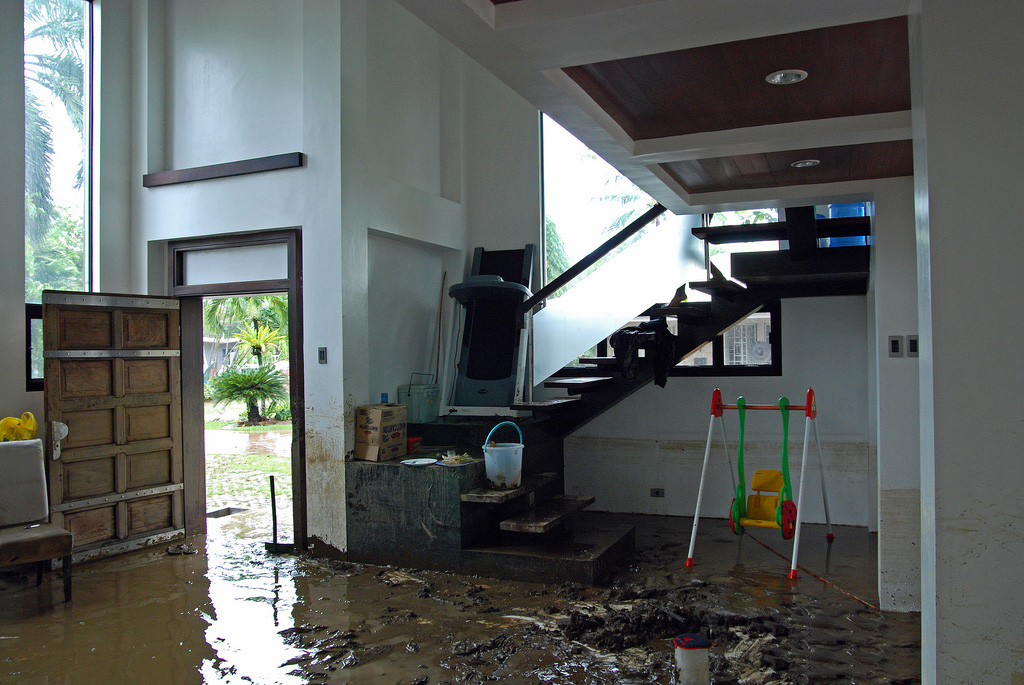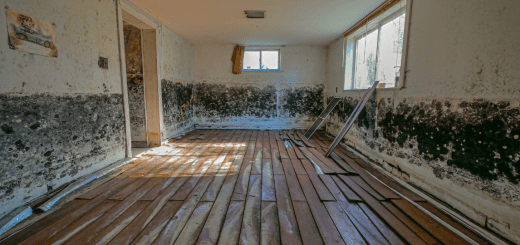What to Expect from Commercial Mold Remediation
A moldMold is a type of fungus that grows in damp or humid conditi... More infestation is a potential liability issue for commercial property owners. The health problems of customers, employees, and visitors that stem from moldMold is a type of fungus that grows in damp or humid conditi... More exposure can balloon into major controversy. Indoor environmental quality should be a primary consideration for business owners.
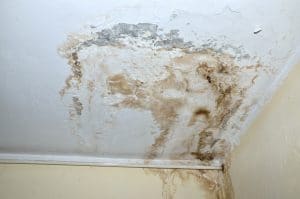 Identifying Mold in a Commercial Setting
Identifying Mold in a Commercial Setting
A moldMold is a type of fungus that grows in damp or humid conditi... More infestation in a building is a serious issue, but identifying the cause is hardly an easy task. Toxic moldMold is a type of fungus that grows in damp or humid conditi... More may develop in various ways. Construction defects, substandard materials, failure to disclose a moldMold is a type of fungus that grows in damp or humid conditi... More issue and improper architectural design are probable causes of a building’s moldMold is a type of fungus that grows in damp or humid conditi... More problem.
Commercial property owners may address an unsightly moldMold is a type of fungus that grows in damp or humid conditi... More invasion by understanding the nature of sporesSpores are microscopic reproductive units of fungi or mold t... More, the ideal conditions for moldMold is a type of fungus that grows in damp or humid conditi... More growth and how the sporesSpores are microscopic reproductive units of fungi or mold t... More can be fully eliminated. A successful mold remediation process usually prevents the moldMold is a type of fungus that grows in damp or humid conditi... More from returning.
What is mold?
MoldMold is a type of fungus that grows in damp or humid conditi... More sporesSpores are microscopic reproductive units of fungi or mold t... More are a type of fungus. SporesSpores are microscopic reproductive units of fungi or mold t... More are prevalent in the natural environment, and airborne sporesSpores are microscopic reproductive units of fungi or mold t... More can find their way into the interior of commercial and residential buildings. MoldMold is a type of fungus that grows in damp or humid conditi... More needs only a consistent source of water, oxygenOxygen is a chemical element essential for combustion and li... More, and an organic food source to thrive.
What Causes Mold?
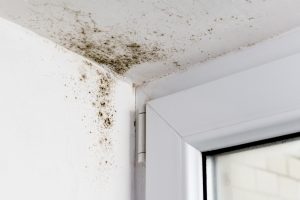
Condensation near a window can cause moldMold is a type of fungus that grows in damp or humid conditi... More.
A building that has an unaddressed moisture problem will likely develop a moldMold is a type of fungus that grows in damp or humid conditi... More issue. The sporesSpores are microscopic reproductive units of fungi or mold t... More commonly latch onto places that lack sunlight and an adequate airflow, such as behind non-porous wallpaper, on walls, along the windowsills, and on ceilings.
While water leaks provide dependable nourishment to moldMold is a type of fungus that grows in damp or humid conditi... More sporesSpores are microscopic reproductive units of fungi or mold t... More, indoor humidityHumidity is the amount of moisture or water vapor present in... More levels higher than 60 percent also contribute to the flourishment of moldMold is a type of fungus that grows in damp or humid conditi... More colonies. A building’s wooden materials, damp carpeting, and drywall provide ample sustenance to growing moldMold is a type of fungus that grows in damp or humid conditi... More clusters.
How do you choose a mold remediation company?
Once moldMold is a type of fungus that grows in damp or humid conditi... More is apparent via the unsightly splotches, musty odors, and increasing health issues of employees, hiring a mold remediation company is the first step. Cleaning moldMold is a type of fungus that grows in damp or humid conditi... More with store-bought products is incomparable to the professional services a mold remediationMold remediation is the process of identifying, removing, an... Moreremediation companyA remediation company is a business specializing in cleaning... More provides.
Different types of moldMold is a type of fungus that grows in damp or humid conditi... More grow in various geographic areas. Southwestern mold remediationMold remediation is the process of identifying, removing, an... More companies, for example, treat moldMold is a type of fungus that grows in damp or humid conditi... More that is frequently found growing in the Southwestern regions of the US. Plus, a mold remediationMold remediation is the process of identifying, removing, an... MoreA remediation company is a business specializing in cleaning... More may specialize in assessment, testing, treatment, or all three.
How do mold remediation experts start?
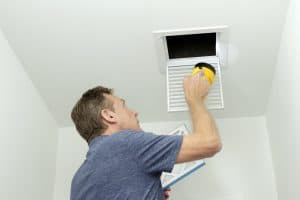 The mold removal specialists will arrive at the infested site and conduct a thorough assessment of the extent of damage caused by the growth. Business possessions that have been damaged by moldMold is a type of fungus that grows in damp or humid conditi... More growth are evaluated. MoldMold is a type of fungus that grows in damp or humid conditi... More testing and a lab analysis of results are also performed.
The mold removal specialists will arrive at the infested site and conduct a thorough assessment of the extent of damage caused by the growth. Business possessions that have been damaged by moldMold is a type of fungus that grows in damp or humid conditi... More growth are evaluated. MoldMold is a type of fungus that grows in damp or humid conditi... More testing and a lab analysis of results are also performed.
An assessment of the damage begins with a visual inspectionA visual inspection is the initial examination of a property... More. However, at times, moldMold is a type of fungus that grows in damp or humid conditi... More sporesSpores are microscopic reproductive units of fungi or mold t... More will fail to be visible. Hidden moldMold is a type of fungus that grows in damp or humid conditi... More growth can occur within HVAC systems and wall cavities. The professional will engage in sampling to determine the root cause of moldMold is a type of fungus that grows in damp or humid conditi... More growth and identify moldMold is a type of fungus that grows in damp or humid conditi... More species.
The first rule of mold remediationMold remediation is the process of identifying, removing, an... More is to stop the water source. Since moldMold is a type of fungus that grows in damp or humid conditi... More feeds off moisture, any leaks in windows, roofs or doors must be repaired during the initial phases of the mold remediationMold remediation is the process of identifying, removing, an... More process. A quality moldMold is a type of fungus that grows in damp or humid conditi... More removal expert will locate the water source and fix it.
What equipment do mold cleanup specialists use?
In order to conduct proper testing of the moisture levels inside the building, the remediation pro will utilize various instruments and technology. HumidityHumidity is the amount of moisture or water vapor present in... More meters alert the specialist to indoor humidityHumidity is the amount of moisture or water vapor present in... More levels. HVAC system filters are used to filter the tiny moldMold is a type of fungus that grows in damp or humid conditi... More sporesSpores are microscopic reproductive units of fungi or mold t... More.
Moisture meters are invaluable tools of the trade. The meters help detect the moisture contentMoisture content is the amount of water present in a materia... More of building materials, such as carpet, brick, wood and concrete, after water damage. Moisture meters are also useful for measuring the moisture levels of dryingDrying is the process of removing moisture from materials, s... More materials.
A borescope camera eliminates the need to cut through drywall to identify moldMold is a type of fungus that grows in damp or humid conditi... More growing inside walls, crawl spaces and similarly enclosed areas. The handheld tool features a video camera on one end, which gives the expert the ability to see potential moldMold is a type of fungus that grows in damp or humid conditi... More issues.
What steps does mold remediationMold remediation is the process of identifying, removing, an... More involve?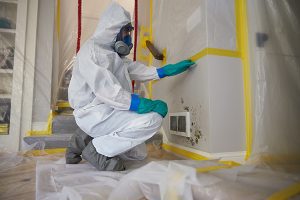
In order to prevent contaminationContamination is the presence of harmful or unwanted substan... More to other areas in the building, the mold remediationMold remediation is the process of identifying, removing, an... More experts seal off the contaminated space. Poly sheeting is affixed to the walls, ceilings, and floors. HEPA-equipped air filtration units then filter the contaminated air in the mold-infested areas.
Affected building materials undergo a detailed cleaning so that zero traces of moldMold is a type of fungus that grows in damp or humid conditi... More are visible. Damaged surfaces are either repaired or replaced by the remediation companyA remediation company is a business specializing in cleaning... More. Upon completion, the site is revisited to ensure the moldMold is a type of fungus that grows in damp or humid conditi... More growth has not reappeared and there are no signs of water damage.
Selecting a Mold Remediation Company
A successful mold remediationMold remediation is the process of identifying, removing, an... More project allows the employees and other occupants to return to the commercial property without further health complaints or physical symptoms. It is very important to deal with a mold remediation company that local business owners rely upon.
Consult a mold remediationMold remediation is the process of identifying, removing, an... More professional as soon as you notice the pesky moldMold is a type of fungus that grows in damp or humid conditi... More growth. This will stop the outbreak before it has a chance to spread. Remember that moldMold is a type of fungus that grows in damp or humid conditi... More growth can occur within 24 to 48 hours after water damage. Therefore, swift action is critical to avoiding building moldMold is a type of fungus that grows in damp or humid conditi... More issues.
Mold cleanup services by professionals include not only a thorough assessment, testing in partnership with nationally recognized testing facilities, cleanup and preventionPrevention refers to actions taken to reduce the likelihood ... More, but also a report of the results of their assessment to your insurance company to accelerate the property claims process.










